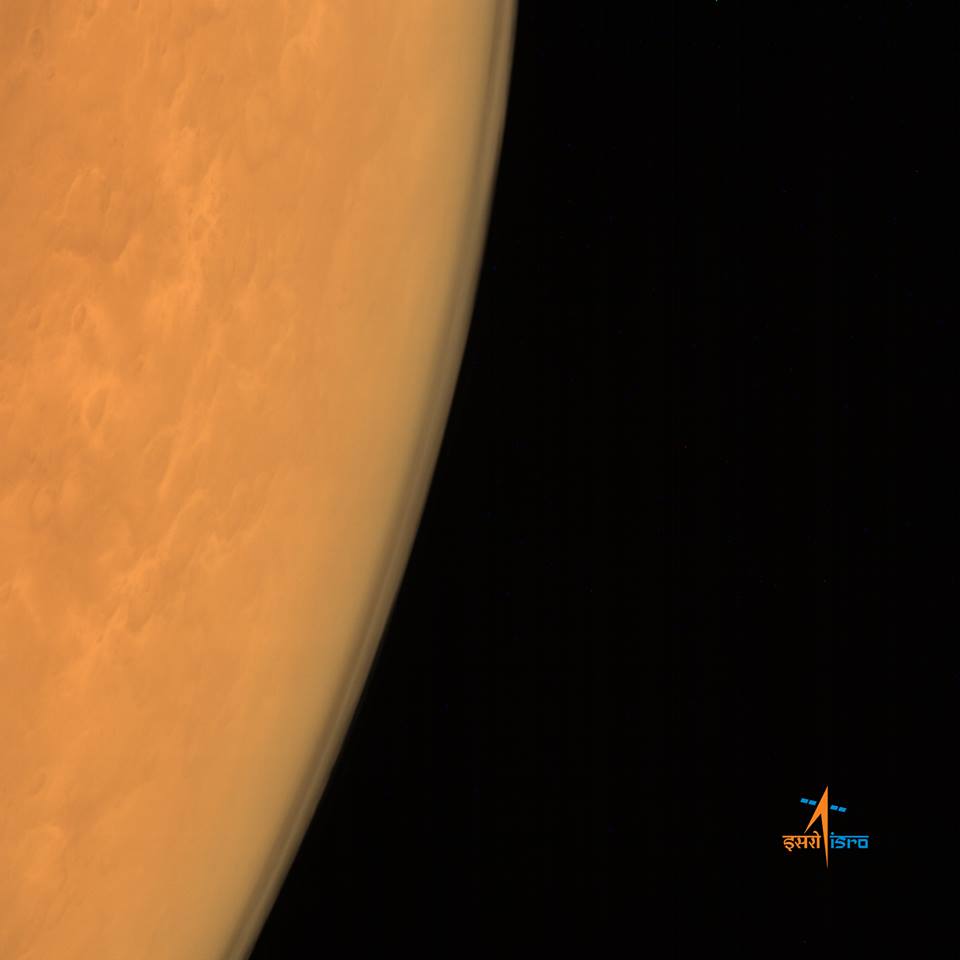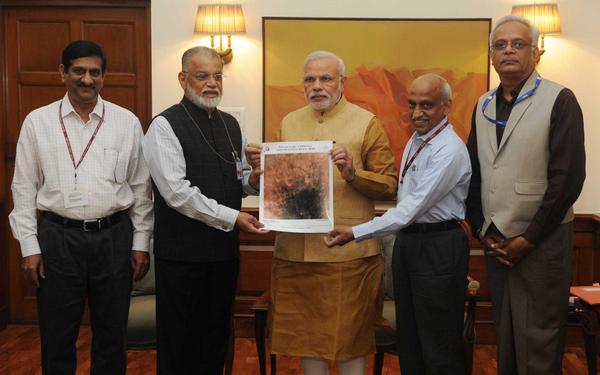Just hours after making history by being the first Mars mission to succeed in its first attempt, Mangalyaan was already at work, and has sent back a set of data, including high-quality images of the Red Planet.
Mangalyaan reportedly clicked five images on its first day in Martian orbit, according to officials at the Indian Space Research Organisation (ISRO), which became only the fourth space agency in the world, and the first in Asia, to put its spacecraft in an orbit around Mars.
The first image, as seen above, has been taken from a height of 7,300 km; with 376 m spatial resolution, as posted by ISRO.
The view is nice up here. pic.twitter.com/VmAjNI76lm
— ISRO's Mars Orbiter (@MarsOrbiter) September 25, 2014
"Images are clicked. Data is downloaded. Process is going on," a top ISRO official was quoted as saying by Press Trust of India.
The second photo shows the Martian atmosphere as seen from an altitude of 8449 km. The image was taken by the Mars Color Camera on-board the spacecraft.
There was reportedly a delay in receiving these images, which were to come in by Wednesday afternoon, thus raising some amount of concern at ISRO.
However, India's Mars Orbiter spacecraft did send in five pictures of the Red Planet's surface by Wednesday, Hindustan Times reported. "The Mars Orbiter has started sending pictures. We have received five pictures and these are being processed," an official said.
The ISRO team also presented the set of pictures to Prime Minister Narendra Modi.
A team of @isro scientists presented the 1st pictures from #Mangalyaan today morning. @isro pic.twitter.com/sqCRQrhftO
— Narendra Modi (@narendramodi) September 25, 2014
The spacecraft comprised five main payloads, among which is the Mars Colour Camera (MCC), a tri-colour camera that will provide images and information about the surface features and composition of the planet. It will also be used to probe the two satellites of Mars -- Phobos and Deimos.
The 1,350 kg satellite has been placed in an elliptical orbit around Mars and it will be closest to the plant at 377 km and farthest at 80,000 km.
While the technical objective of ISRO behind this mission was to develop technologies for inter-planetary missions, its scientific aim is to explore the surface and atmosphere of Mars and study the mineralogy, morphology and surface features.
The mission is expected to last from 6 to 10 months in Martian orbit.
MOM will also study the atmosphere of Mars, using a methane gas sniffer, in a bid to unearth presence of Martian microbes, if any.



















